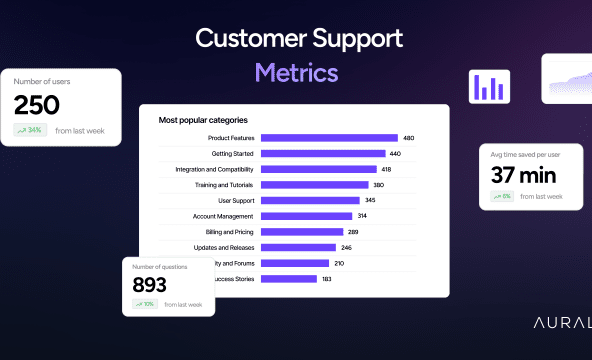Service Metrics
Service metrics are key performance indicators (KPIs) that help businesses measure, monitor, and improve the quality of their customer service and support operations. These metrics provide valuable insights into how well service teams are performing, how satisfied customers are, and where improvements can be made to enhance customer experiences. By tracking and analyzing service metrics, organizations can optimize their operations, improve customer satisfaction, and ultimately drive business success.
One of the most commonly used service metrics is Customer Satisfaction (CSAT). CSAT is typically measured through surveys where customers are asked to rate their satisfaction with a particular interaction, product, or service. This metric provides immediate feedback on how well customer expectations were met and helps businesses identify areas where service can be improved. High CSAT scores indicate that customers are happy with the service, while low scores highlight potential issues that may need to be addressed.
Another critical metric is First Response Time (FRT), which measures the amount of time it takes for a support agent to respond to a customer’s initial inquiry or ticket. This is an important indicator of responsiveness, and a shorter first response time is generally associated with better customer satisfaction. In today’s fast-paced environment, customers expect quick replies, and reducing FRT can help improve customer retention and reduce churn.
Resolution Time or Average Handle Time (AHT) is another important service metric that tracks how long it takes to fully resolve a customer’s issue. This includes both the time spent on the actual conversation or interaction, as well as any follow-up time required. A shorter resolution time generally indicates an efficient support team, while longer times may signal inefficiencies or the need for better training, resources, or tools. Optimizing resolution time while maintaining service quality is essential for improving overall customer experience.
Net Promoter Score (NPS) is another valuable service metric used to measure customer loyalty. NPS asks customers how likely they are to recommend a company’s product or service to others, typically on a scale of 0 to 10. Customers who score between 9 and 10 are considered promoters, those who score 7 and 8 are passives, and those who score between 0 and 6 are detractors. A higher NPS indicates a strong, loyal customer base, which is vital for long-term success and growth.
Customer Effort Score (CES) measures how easy it was for customers to resolve their issues with the company. This metric focuses on the ease of interaction and the effort customers have to put into getting their problems solved. The lower the effort score, the better the experience, as it indicates that customers were able to get their issues resolved quickly and easily. Minimizing customer effort is key to improving satisfaction and loyalty.
Ticket Volume is another metric that helps measure the number of customer inquiries or issues handled by support teams. While this metric alone doesn’t necessarily indicate service quality, it helps organizations understand the volume of work their teams are handling and whether they need to allocate more resources. It can also be used in conjunction with other metrics to analyze the relationship between ticket volume and resolution times or customer satisfaction.
Service Level Agreement (SLA) Compliance is another key metric that measures whether the company is meeting the terms set out in its service agreements with customers. SLAs often include response times, resolution times, and other performance targets, and this metric tracks whether those targets are being met. Regularly monitoring SLA compliance helps businesses ensure they are delivering the level of service promised to customers, which is critical for maintaining customer trust and loyalty.
Escalation Rate tracks the percentage of issues that are escalated from lower-tier support agents to higher-level or specialized agents. A high escalation rate may indicate that agents at the first level are not adequately equipped to handle certain issues or that additional training or resources are needed. Reducing the escalation rate can help improve operational efficiency and lead to faster resolutions.
Finally, Customer Retention Rate is an important metric that indicates the percentage of customers who continue to use a business’s products or services over time. High retention rates typically indicate that customers are satisfied with the support they are receiving, while lower retention rates may signal issues that need to be addressed, such as poor customer service or inadequate support solutions.
In conclusion, service metrics are essential tools for businesses to evaluate the effectiveness of their customer service teams, identify areas for improvement, and ensure that they are meeting customer expectations. By monitoring key performance indicators like CSAT, NPS, FRT, AHT, and SLA compliance, businesses can enhance their support operations, foster customer loyalty, and ultimately drive better outcomes for both the organization and its customers. Regularly tracking and analyzing these metrics is crucial for delivering exceptional customer service in today’s competitive marketplace.

- Articles
-
 Amy
Amy
- 10 min read
